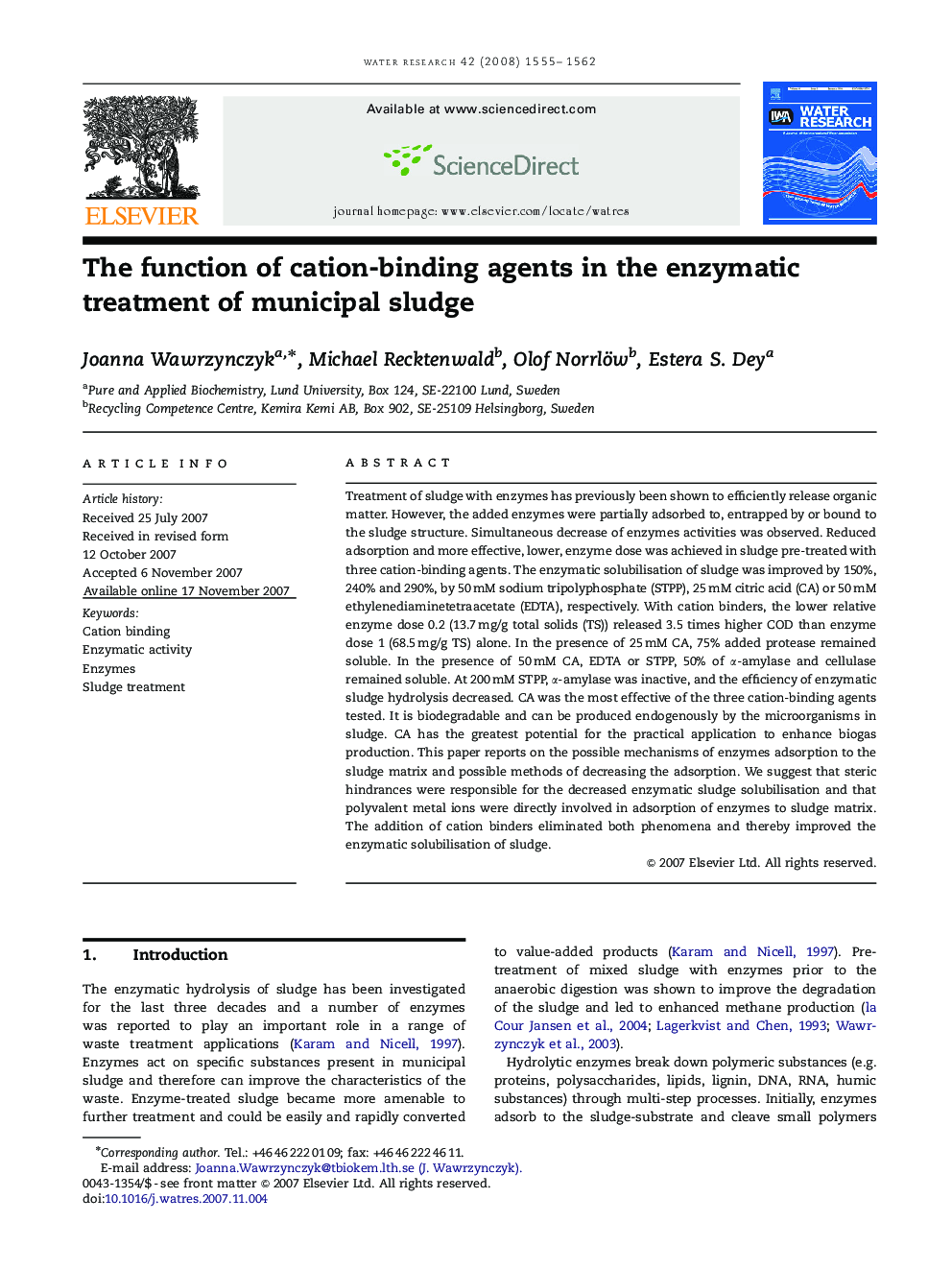| Article ID | Journal | Published Year | Pages | File Type |
|---|---|---|---|---|
| 4485043 | Water Research | 2008 | 8 Pages |
Treatment of sludge with enzymes has previously been shown to efficiently release organic matter. However, the added enzymes were partially adsorbed to, entrapped by or bound to the sludge structure. Simultaneous decrease of enzymes activities was observed. Reduced adsorption and more effective, lower, enzyme dose was achieved in sludge pre-treated with three cation-binding agents. The enzymatic solubilisation of sludge was improved by 150%, 240% and 290%, by 50 mM sodium tripolyphosphate (STPP), 25 mM citric acid (CA) or 50 mM ethylenediaminetetraacetate (EDTA), respectively. With cation binders, the lower relative enzyme dose 0.2 (13.7 mg/g total solids (TS)) released 3.5 times higher COD than enzyme dose 1 (68.5 mg/g TS) alone. In the presence of 25 mM CA, 75% added protease remained soluble. In the presence of 50 mM CA, EDTA or STPP, 50% of α-amylase and cellulase remained soluble. At 200 mM STPP, α-amylase was inactive, and the efficiency of enzymatic sludge hydrolysis decreased. CA was the most effective of the three cation-binding agents tested. It is biodegradable and can be produced endogenously by the microorganisms in sludge. CA has the greatest potential for the practical application to enhance biogas production. This paper reports on the possible mechanisms of enzymes adsorption to the sludge matrix and possible methods of decreasing the adsorption. We suggest that steric hindrances were responsible for the decreased enzymatic sludge solubilisation and that polyvalent metal ions were directly involved in adsorption of enzymes to sludge matrix. The addition of cation binders eliminated both phenomena and thereby improved the enzymatic solubilisation of sludge.
